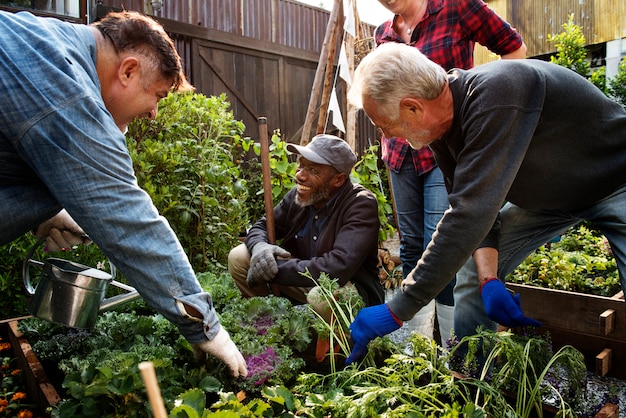Advocacy & Policy Change: Community Projects for Lasting Impact

Advocacy and Policy Change: Using Your Community Action Project to Influence Legislation and Create Lasting Impact involves strategically leveraging local initiatives to drive broader societal change. This approach empowers communities to address pressing issues, engage with policymakers, and shape legislation that promotes positive and sustainable outcomes.
Community action projects are powerful tools for addressing local issues, but their impact doesn’t have to stop there. By strategically incorporating advocacy and policy change: using your community action project to influence legislation and create lasting impact, you can amplify your efforts and create broader societal change. This involves understanding the legislative process, engaging with policymakers, and mobilizing community support to champion your cause.
Ready to learn how to transform your community project into a catalyst for lasting policy change? Let’s explore the strategies and tactics you can use to make a real difference.
Understanding Advocacy and Policy Change
Advocacy and policy change are crucial for creating lasting impact beyond immediate community needs. Understanding these concepts is the first step in leveraging your community action project to make a significant difference.
What is Advocacy?
Advocacy involves actively supporting a cause or proposal. It’s about influencing decisions within political, economic, and social systems and institutions.
What is Policy Change?
Policy change refers to altering existing laws, regulations, or practices. It can happen at the local, state, or federal level, depending on the scope of the issue.
Policy change is an important part of advocacy and policy change: using your community action project to influence legislation and create lasting impact.
- Research: Thoroughly investigate the issue and existing policies.
- Collaboration: Work with other organizations and community members.
- Communication: Clearly articulate your message and goals.
Effective advocacy and policy change require strategic planning, consistent effort, and community support. By understanding these fundamentals, your community action project can contribute to meaningful and lasting change.
Advocacy encompasses a range of activities aimed at influencing policy change. These activities aim to bring public concerns to the forefront, compelling policymakers to address them. When your community action project aligns with broader advocacy initiatives, it gains momentum and legitimacy. Make sure to involve multiple people in advocacy and policy change: using your community action project to influence legislation and create lasting impact.
Identifying Issues and Setting Goals
Before embarking on advocacy and policy change, it’s essential to identify the specific issues you want to address and set clear, achievable goals. Here’s how to get started.
Conduct a Community Needs Assessment
Start by understanding the needs of your community. This involves gathering data through surveys, interviews, and public forums.
Define Specific, Measurable Goals
Once you’ve identified the issues, set goals that are specific, measurable, achievable, relevant, and time-bound (SMART).
Advocacy and policy change: using your community action project to influence legislation and create lasting impact requires clear objectives for long-term success.
- Research: Gather data on the issue to understand its scope and impact.
- Analysis: Analyze the data to identify trends and patterns.
- Prioritization: Focus on the most pressing needs that align with your project’s mission.
By identifying issues and setting clear goals, you lay the groundwork for effective advocacy and policy change. This focused approach ensures that your community action project contributes to meaningful and lasting improvements.
Effective issue identification involves not just understanding symptoms but also uncovering root causes. This deeper analysis ensures that your advocacy efforts target the underlying problems, thereby leading to more sustainable solutions. This thorough approach is a part of advocacy and policy change: using your community action project to influence legislation and create lasting impact.
Building a Coalition and Mobilizing Support
Building a strong coalition and mobilizing community support are vital for advocacy and policy change. A united front amplifies your voice and increases your chances of success.
Identify Key Stakeholders
Determine who has a vested interest in the issue, including community leaders, local businesses, and other organizations.
Engage Community Members
Organize community meetings, workshops, and events to educate and involve people.
Effective advocacy and policy change: using your community action project to influence legislation and create lasting impact relies on a broad base of support.
- Partnerships: Collaborate with other organizations to share resources and expertise.
- Education: Inform the community about the issue and the need for change.
- Outreach: Use various channels to reach different segments of the community.
By building a coalition and mobilizing support, you create a powerful force for change. This collaborative approach ensures that your advocacy efforts reflect the needs and desires of the entire community.

Mobilizing community support involves inspiring people to take action. Whether it’s signing petitions, attending rallies, or contacting elected officials, every action counts and contributes to the overall momentum. Involving more people in advocacy and policy change: using your community action project to influence legislation and create lasting impact is a great strategy for building a strong community base.
Engaging with Policymakers
Engaging with policymakers is a crucial step in advocating for policy change. Building relationships and effectively communicating your message can influence their decisions.
Research Policymakers
Learn about the policymakers who have the power to influence the issues you care about, including their backgrounds, priorities, and voting records.
Schedule Meetings
Request meetings with policymakers to discuss your concerns and propose solutions. Be prepared to present your case clearly and concisely.
Successful advocacy and policy change: using your community action project to influence legislation and create lasting impact requires direct engagement with policymakers.
- Research: Understand the policymakers’ positions on relevant issues.
- Preparation: Develop a clear and concise message with supporting data.
- Follow-up: Maintain communication and provide additional information as needed.
By engaging with policymakers, you can educate them about the importance of your issues and advocate for policy changes that benefit your community. This direct interaction is essential for driving lasting change.
When meeting with policymakers, it’s important to be respectful, professional, and persistent. Building a relationship with them can pave the way for future collaboration and support. Having a professional attitude is a crucial element of advocacy and policy change: using your community action project to influence legislation and create lasting impact.
Crafting Your Message
Crafting a compelling message is essential for effective advocacy. A clear, concise, and persuasive message can resonate with policymakers and the public.
Identify Your Key Points
Focus on the most important aspects of your issue and what you want to achieve. Use data and stories to support your points.
Tailor Your Message
Adapt your message to suit different audiences, whether it’s policymakers, community members, or the media.
Effective advocacy and policy change: using your community action project to influence legislation and create lasting impact depends on a well-crafted message.
- Simplicity: Keep your message simple and easy to understand.
- Emotion: Appeal to people’s emotions by sharing personal stories.
- Clarity: Clearly state your goals and the actions you want people to take.
By crafting a compelling message, you can effectively communicate the importance of your issue and inspire action. This strategic approach is crucial for driving policy change and making a lasting impact.
Your message should also highlight the potential benefits of the policy change you are advocating for. Emphasizing how it will improve people’s lives can make your argument more convincing. In advocacy and policy change: using your community action project to influence legislation and create lasting impact, clear and actionable messaging is critical.
Measuring and Celebrating Success
Measuring and celebrating success is vital for maintaining momentum and ensuring accountability in your advocacy efforts. Tracking your progress and acknowledging achievements can inspire continued dedication.
Establish Metrics
Define clear metrics to measure the impact of your advocacy efforts. This might include the number of people reached, policy changes implemented, or funds raised.
Celebrate Milestones
Acknowledge and celebrate milestones along the way to keep your team and community motivated.
Effective advocacy and policy change: using your community action project to influence legislation and create lasting impact benefits from regular progress assessments.
- Reporting: Regularly report on your progress to stakeholders and the community.
- Analysis: Analyze your metrics to identify what’s working and what needs improvement.
- Recognition: Publicly recognize the contributions of volunteers and partners.
By measuring and celebrating success, you reinforce the value of your advocacy efforts and inspire ongoing commitment. This positive feedback loop is essential for driving lasting change and achieving your goals.
Celebrating small victories along the way can also help maintain morale and prevent burnout among volunteers and staff. Recognizing their hard work ensures continued engagement in advocacy and policy change: using your community action project to influence legislation and create lasting impact.
| Key Point | Brief Description |
|---|---|
| 💡 Identify Issues | Assess community needs to define specific goals. |
| 🤝 Build Coalitions | Engage stakeholders and mobilize community support. |
| 🗣️ Engage Policymakers | Communicate effectively to influence their decisions. |
| ✅ Measure Success | Track progress and celebrate milestones. |
Frequently Asked Questions
The first step is to identify a specific issue within your community that needs attention. This could be anything from environmental concerns to social justice issues.
Engage community members by organizing meetings, workshops, and events to educate them about the issue and the need for change. Make it easy for them to participate.
Engage policymakers by researching their positions, scheduling meetings to discuss your concerns, and preparing a clear and concise message with supporting data. Follow up regularly.
Measure success by establishing clear metrics such as the number of people reached, policy changes implemented, or funds raised. Regularly report on your progress to stakeholders.
Celebrating milestones reinforces the value of your advocacy efforts and inspires ongoing commitment. It also acknowledges the contributions of volunteers and partners, maintaining morale.
Conclusion
Transforming community action projects into vehicles for advocacy and policy change: using your community action project to influence legislation and create lasting impact allows for powerful, sustainable change. By understanding the legislative process, building community support, and engaging effectively with policymakers, you can turn local initiatives into catalysts for broader societal progress.
Embrace the opportunity to make a lasting difference. Your community action project has the potential to shape policies and improve lives for generations to come!





